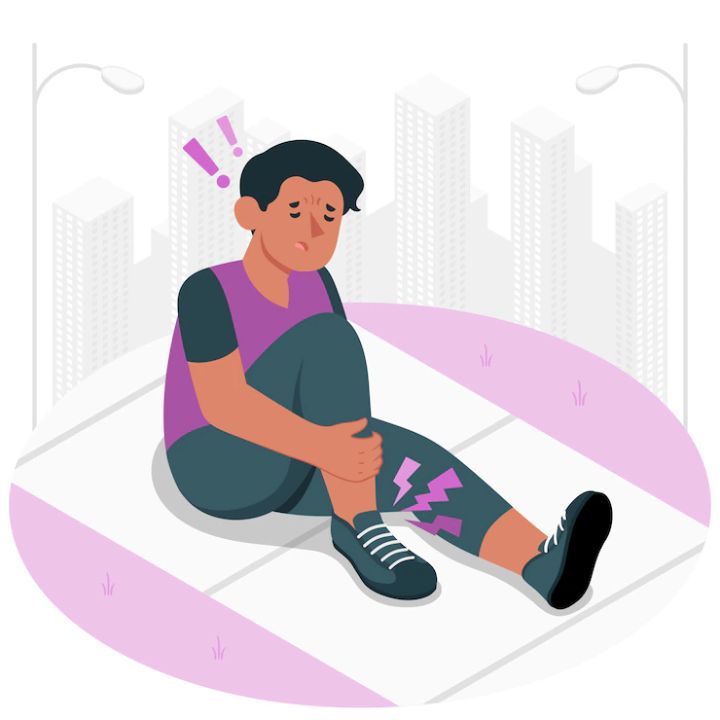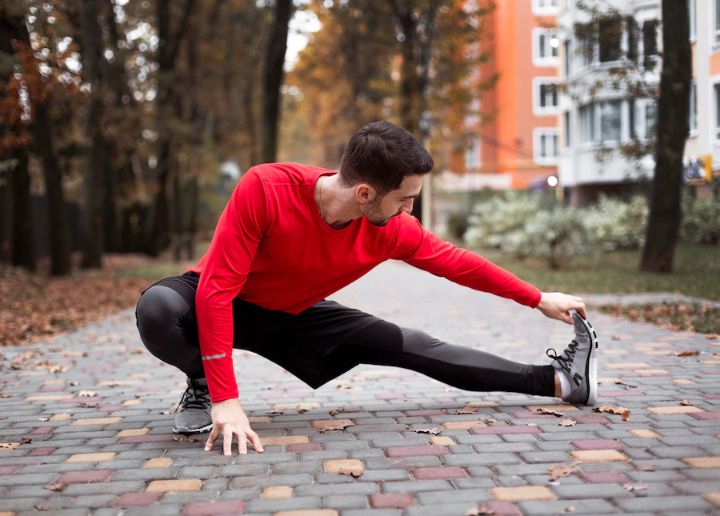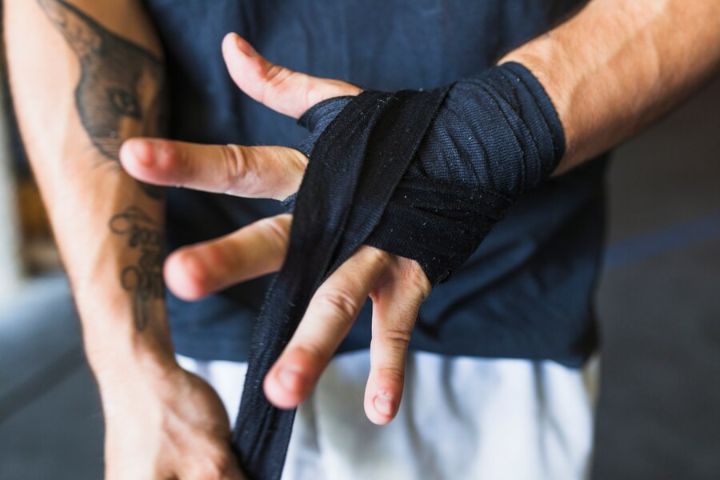Accidents and injuries can happen unexpectedly and can be debilitating and life-altering. The good news is that many injuries can be avoided or prevented by taking simple steps to increase awareness and reduce risks. Injury prevention is essential to living a healthy, active life and can help protect you from long-term physical and emotional harm.

Photo Credit: storyset
Injury prevention is an essential part of maintaining a healthy lifestyle. By incorporating preventive measures into your daily routine, you can reduce the risk of sustaining injuries and maintain optimal physical health. Here, we explore some effective strategies that can help you prevent injuries and enhance your overall well-being.
Before engaging in any physical activity, it is important to warm up your muscles and stretch to reduce the risk of injuries. A proper warm-up and stretching routine can help increase flexibility, improve circulation, and prepare your body for more intense exercise.
Using proper technique during exercise or physical activity is crucial to preventing injuries. Incorrect form can place excessive strain on your joints and muscles, leading to injuries. Ensure you learn proper techniques for any activity you participate in.
Wearing proper gear during exercises or physical activity can minimize the risk of injuries. Proper gear will vary depending on the activity or sport, but can include helmets, gloves, or supportive shoes.
By incorporating these strategies into your routine, you can effectively minimize the risk of injuries and maintain a healthy, active lifestyle.

Photo Credit: Freepik
There are various techniques and exercises that can help in preventing injuries. By incorporating these into your daily routine, you can significantly reduce your risk of getting injured. Here are some effective injury prevention techniques:
Stretching is an essential part of injury prevention. It helps warm up your muscles, improves flexibility, and enhances blood flow to the muscles. Try to incorporate stretching into your routine before and after physical activities.
Strengthening exercises can help improve your balance, coordination, and stability. This, in turn, can reduce the risk of falls and other injuries. Incorporate exercises such as squats, lunges, and planks into your routine to strengthen your muscles.
Using proper technique when performing physical activities can help prevent injuries. Whether you’re lifting weights or playing sports, make sure you understand the correct form and technique. This can reduce the risk of muscle strains, sprains, and other injuries.
Rest and recovery are essential for injury prevention. Make sure to take breaks and allow your body to recover after physical activities. This can reduce the risk of overuse injuries and fatigue.
Implementing these techniques and exercises into your routine can significantly reduce the risk of getting injured. Always remember to listen to your body and adjust your routine accordingly.

Photo Credit: master1305
There are various injury prevention methods that individuals can implement to reduce the risk of getting injured. Some of these methods include:
By implementing these methods, individuals can significantly reduce the risk of injury and improve their overall well-being.
Preventing injuries is crucial in maintaining an active and healthy lifestyle. It is essential to keep in mind some key measures to ensure safety and wellbeing at all times. Here are some essential injury prevention measures you should consider:
One of the primary ways to prevent injuries is by maintaining a safe environment. Ensure your home and workplace are free of potential hazards, such as cluttered spaces, loose wires, or slippery floors. You should also keep sharp objects out of reach of children and handle them with caution.
Using protective gear is another effective way of preventing injuries. Depending on the activity, consider wearing helmets, knee pads, gloves, or other protective gear to minimise the risk of getting hurt. For instance, when cycling, always wear a helmet and reflective clothing to ensure your visibility on the road.
Being mindful of potential risks is a critical injury prevention measure. Always be aware of your surroundings and avoid engaging in risky activities. For instance, when driving or walking on the road, be mindful of traffic rules and signals to avoid accidents. You should also avoid participating in activities that exceed your skill level or physical capabilities.
Embracing injury prevention awareness is essential in preventing injuries. Stay updated with the latest injury prevention techniques, strategies, and exercises. Participate in programs that promote injury prevention awareness and educate yourself and others on the importance of injury prevention.

Photo Credit: pikisuperstar
Incorporating these injury prevention measures into your daily life can significantly reduce the risk of injury. Remember, injury prevention is about physical safety and maintaining overall well-being, enabling you to lead a happy and healthy life.
It’s easy to overlook injury prevention in our everyday lives, but taking small steps to minimise the risk of injury can significantly impact our overall well-being. Here are some practical ways to incorporate injury prevention into your daily routine:
Whether you’re about to start a workout or simply getting ready for the day, stretching is a simple and effective way to prevent injuries. Incorporating a few basic stretches into your routine can help improve flexibility and reduce the risk of strains and sprains.
Good posture is not only important for preventing back and neck pain but can also reduce the risk of other injuries and improve overall balance and stability. Here are some tips for maintaining proper posture throughout the day:
The right shoes can make a significant difference in preventing injuries, especially when it comes to activities that involve running, jumping, or other high-impact movements. Here are some tips for choosing the right footwear:
Being mindful of your movements can help you avoid injuries by reducing the risk of sudden, jerky movements and other motions that can strain your muscles or joints. Here are some tips for practicing mindful movement:
Injury prevention should be a top priority for everyone. By avoiding or preventing normal injuries, individuals can significantly reduce the risk of long-term health issues and improve their overall well-being. Throughout this article, we have explored various strategies, techniques, and methods individuals can incorporate into their daily routines to prevent injuries.

Photo Credit: Freepik
Taking injury prevention seriously and implementing the measures we’ve discussed is essential. Whether it’s maintaining a safe environment, using protective gear, or being mindful of potential risks, every action counts in preventing injuries. Injury prevention awareness is also crucial, as it allows individuals to identify potential hazards and take appropriate action before an injury occurs.
Now that you understand the importance of injury prevention, it’s time to take action. Start by incorporating the injury prevention strategies, techniques, and methods discussed in this article into your daily routine. If you’re unsure where to start, consider joining an injury prevention program or consulting with a healthcare professional to learn more.
Remember, injury prevention is an ongoing process and requires continuous effort to be successful. By embracing a safer, healthier life through injury prevention, you can enjoy greater peace of mind and live life to the fullest.
A: Injury prevention refers to proactive measures to avoid or prevent normal injuries. It is important because it can contribute to overall well-being and reduce the risk of debilitating injuries.
A: Some strategies for preventing injuries include staying physically active, maintaining a healthy lifestyle, using proper technique during physical activities, and wearing appropriate protective gear.
A: Effective injury prevention techniques include stretching and warming up before physical activity, maintaining good posture, practising proper body mechanics, and incorporating strength training exercises into your routine.
A: Injury prevention methods can be implemented through injury prevention programs, educational initiatives, and creating a safe environment. These methods raise awareness and educate individuals on how to prevent injuries.
A: Essential measures for injury prevention include maintaining a safe environment, using protective gear when necessary, being mindful of potential risks, and staying informed about injury prevention through awareness campaigns and resources.
A: Injury prevention can be incorporated into everyday life by practicing safety measures during activities such as sports, household chores, and workplace tasks. It involves being mindful of potential risks and taking necessary precautions to minimize the risk of getting injured.